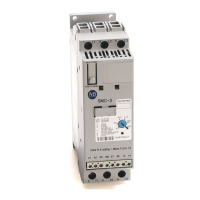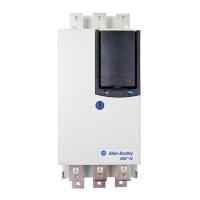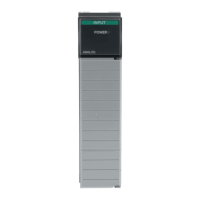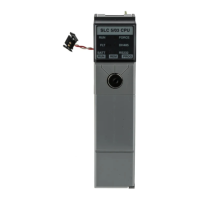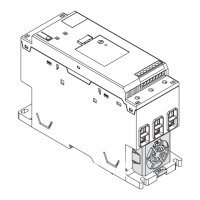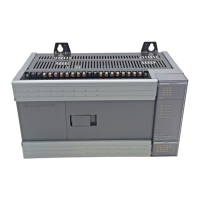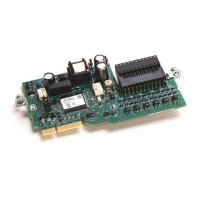Rockwell Automation Publication MOTION-RM002H-EN-P-February 2018 151
MOTION_INSTRUCTION Structure
Mnemonic Description
.EN (Enable) Bit 31 It is set when the rung makes a false-to-true transition and remains set until the servo
message transaction is completed and the rung goes false.
.DN (Done) Bit 29 It is set when the axis' position action has been successfully redefined.
.ER (Error) Bit 28 It is set to indicate that the instruction detected an error, such as if you specified an
unconfigured axis.
Description
The MRP instruction directly sets the actual or command position of the specified
axis to the specified absolute or relative position. No motion is caused by this
instruction—the current axis position is simply redefined. Select or enter the
desired Axis, Type, Position Selection, and enter a value or tag variable for the
desired New Position.
If the targeted axis does not appear in the list of available axes, the axis has not
been configured for operation. Use the Tag Editor to create and configure a new
axis.
The MRP instruction may be used while the axis is moving as well as when it is at
rest. MRP is used to redefine position on-the-fly for certain registration, slip
compensation, and re-calibration applications.
Selection Description
Absolute Mode When Absolute is selected or entered as the MRP Type, the New Position specifies the new absolute position of the
axis. No motion occurs—the current axis position (actual or command) is simply redefined to be the specified new
position.
If software overtravel limits are used (refer to Motion Axis Object specification for more information on software
overtravel configuration), the new position must be between the Max Positive and Max Negative Travel configuration
values. Otherwise a software overtravel fault is generated when the instruction is executed.
Important: If software overtravel limit checking is in effect, execution of an MRP in Absolute Mode may invalidate
the current Max Positive and Max Negative Travel limits in the absolute sense. Exercise caution when redefining the
absolute position of an axis that has travel limits.
Absolute and relative mode MRP instructions have the same effect when the axis is not moving. When the axis is
moving, however, absolute mode introduces a position error equal to the motion of the axis during the time it takes to
execute the MRP instruction and assign the new position. Relative mode does not introduce this error and guarantees
an exact correction independent of axis speed or position.
Relative Mode When Relative is selected or entered as the MRP Type, the New Position value is used to offset the current position of
the axis. No motion occurs—the current axis position (actual or command) is simply redefined to be the current
position plus the specified new position.
In relative mode, axis position is redefined in such a way that no position errors are introduced if the axis is moving. It
is particularly useful for unwinding axis position under program control rather than using the built-in rotary axis
feature.
Absolute and relative mode MRP instructions have the same effect when the axis is not moving. When the axis is
moving, however, absolute mode introduces a position error equal to the motion of the axis during the time it takes to
execute the MRP instruction and assign the new position. Relative mode does not introduce this error and guarantees
an exact correction independent of axis speed or position.

